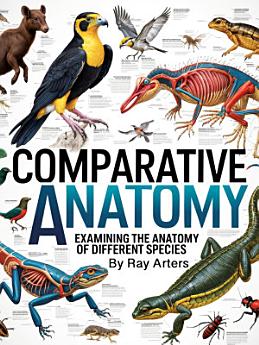Comparative Anatomy: Examining the Anatomy of Different Species
About this ebook
Comparative anatomy emerged as a formal scientific discipline in the 18th and 19th centuries, though humans have always been curious about the similarities between their own bodies and those of other animals. The French naturalist Georges Cuvier is often credited as the father of comparative anatomy, establishing the principle that anatomical structures must be understood in relation to their function and the organism's way of life. His work laid the groundwork for understanding that anatomical features don't exist in isolation but are part of integrated systems that enable survival in specific environments.
The discipline gained tremendous significance with Charles Darwin's theory of evolution, as anatomical similarities between species provided compelling evidence for common ancestry. Homologous structures, those sharing the same fundamental blueprint despite serving different functions, became powerful indicators of evolutionary relationships. The pentadactyl limb, for instance, appears across vertebrates from bats to whales to humans, each modified for its specific purpose yet retaining the same basic five-digit pattern inherited from a common ancestor.








